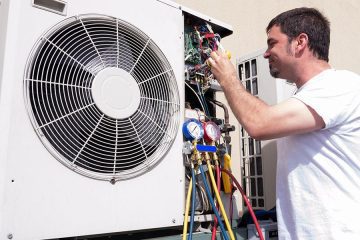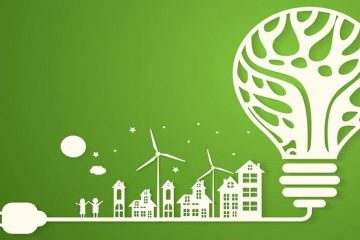Table of Contents
- Understanding the Role of Energy Efficiency Boards in Sustainable Development
- Key Strategies for Implementing Effective Energy Efficiency Programs
- Measuring Success: Metrics and Tools for Energy Efficiency Assessment
- Fostering Community Engagement through Energy Efficiency Initiatives
- Future Trends in Energy Efficiency Boards and Their Impact on Policy
- Q&A
- Closing Remarks
Understanding the Role of Energy Efficiency Boards in Sustainable Development
Energy efficiency boards play a crucial role in guiding initiatives that promote sustainable practices within various sectors. These boards typically consist of diverse stakeholders, including government representatives, industry experts, and community advocates, working collaboratively to develop strategies that prioritize the reduction of energy consumption while maximizing performance. Their expertise helps shape policies that aim to lower carbon footprints, improve public health, and enhance economic growth, all of which are fundamental to sustainable development.
One of the primary functions of these boards is to establish and promote energy efficiency standards that align with both local and global sustainability goals. By doing so, they ensure that energy usage remains within environmentally safe limits while encouraging innovation and the adoption of green technologies. Furthermore, the boards often provide essential resources, such as workshops and training sessions, that empower businesses and individuals to integrate energy-efficient practices effectively.
In addition to setting standards and providing educational resources, these boards are also instrumental in monitoring progress and assessing the effectiveness of implemented measures. They often utilize a variety of metrics to track energy consumption, greenhouse gas emissions, and economic impacts, thereby creating a transparent system for evaluating the success of sustainability initiatives. By sharing this data with the public, energy efficiency boards foster a culture of accountability and inspire further participation in sustainable practices among citizens and organizations alike.


Key Strategies for Implementing Effective Energy Efficiency Programs
Implementing successful energy efficiency programs requires a strategic approach that aligns with organizational goals and addresses individual needs. Engagement with stakeholders is crucial; this can include employees, management, and external partners. By fostering an inclusive environment where everyone feels their input is valued, organizations can enhance the effectiveness of their programs. Hold workshops and brainstorming sessions to gather diverse perspectives, encouraging innovation and ownership in the processes.
Another key strategy involves conducting thorough energy audits. These assessments help identify energy consumption patterns, inefficiencies, and potential areas for improvement. By utilizing advanced technologies and analytics, businesses can gain insights into their energy usage that were previously overlooked. Incorporating periodic reviews of energy data ensures that adjustments can be made as needed, promoting a culture of continuous improvement.
Lastly, implementing a robust monitoring and evaluation system allows organizations to track the progress of energy efficiency initiatives over time. This system should include set performance metrics and regular reporting to document successes and areas needing enhancement. By establishing clear goals and deadlines, teams can remain focused and motivated. Below is a simple table outlining essential metrics for evaluating energy programs:
| Metric | Description | Target Value |
|---|---|---|
| Energy Reduction (%) | Percentage decrease in energy consumption. | 10% annually |
| Cost Savings | Reduction in energy bills. | Increase by 15% yearly |
| Employee Engagement | Number of employees participating in programs. | 75% participation |


Measuring Success: Metrics and Tools for Energy Efficiency Assessment
When evaluating energy efficiency, it is essential to utilize a combination of metrics and tools to obtain a comprehensive view of performance. Energy audits serve as a foundation for this assessment, allowing organizations to identify where energy is being consumed inefficiently and highlighting opportunities for improvement. Utilizing metrics such as energy use intensity (EUI), which measures energy use per square foot, provides a clear indication of building performance and can guide strategic improvements.
Incorporating advanced monitoring tools can further enhance the evaluation process. Technologies such as smart meters and building management systems (BMS) offer real-time data collection and analysis, empowering organizations to make informed decisions. Additionally, utilizing software for data visualization can help stakeholders quickly interpret complex data trends. The ability to visualize energy consumption patterns enables targeted interventions and facilitates ongoing improvement efforts.
To synthesize the findings from energy assessments, creating a clear and comprehensive report is crucial. A well-structured report should include the following components:
- Key Performance Indicators (KPIs): Present measurable objectives aligned with energy efficiency goals.
- Baseline Energy Consumption: Compare current energy usage with historical data to establish benchmarks.
- Recommendations for Improvement: Offer actionable suggestions based on the data gathered during audits.
When generalized, the effectiveness of energy efficiency initiatives can be summarized in a straightforward table:
| Metric | Importance | Tool |
|---|---|---|
| Energy Use Intensity (EUI) | Indicates energy efficiency of buildings. | Energy Audits |
| Meter Readings | Tracks energy consumption over time. | Smart Meters |
| Cost Savings | Measures the financial impact of energy efficiency upgrades. | Financial Analysis Tools |


Fostering Community Engagement through Energy Efficiency Initiatives
Community engagement plays a pivotal role in the success of energy efficiency initiatives. By involving residents in decision-making processes, organizations can cultivate a sense of ownership and responsibility towards sustainable practices. This collaboration can manifest through various channels, including workshops, public forums, and informational sessions. Individuals feel more empowered when they understand how their actions contribute to the greater good, whether it’s through reducing energy consumption or participating in local green projects.
To create effective programs, it’s essential to incorporate incentives and recognition for community members who actively participate. Strategies such as the following can foster increased involvement:
- Community Challenges: Organizing contests around energy-saving practices can motivate residents to take part.
- Workshops: Offering educational sessions on energy-saving technology and practices fosters knowledge and support.
- Local Partnerships: Collaborating with local businesses can provide resources and programs tailored to enhance participation.
Furthermore, implementing a feedback system allows community members to voice their experiences and suggestions, fostering a culture of continuous improvement. Collecting this data can be instrumental in refining initiatives and addressing local concerns. Here’s a brief overview of potential feedback mechanisms that can be implemented:
| Feedback Method | Description |
|---|---|
| Surveys | Online or paper-based surveys to gather community insights. |
| Focus Groups | Small group discussions to delve deeper into specific topics. |
| Social Media Polls | Utilizing social platforms to gauge community opinions quickly. |


Future Trends in Energy Efficiency Boards and Their Impact on Policy
As the global focus on sustainability intensifies, energy efficiency boards are poised to play a critical role in shaping future policies aimed at reducing energy consumption and promoting environmental stewardship. These boards are increasingly seen as vital platforms for collaboration among stakeholders—including government agencies, businesses, and NGOs—providing a forum for discussion on best practices, innovative technologies, and regulatory frameworks. With advancements in data analytics and smart technology, energy efficiency boards can leverage real-time data to drive evidence-based decisions that align with national and regional sustainability goals.
Emerging trends indicate a shift towards integrated energy management systems that encompass not only electricity but also heating, cooling, and transportation sectors. Boards will likely advocate for policies that incentivize investments in energy-efficient technologies, encourage smart metering, and promote the adoption of renewable energy sources. Key initiatives may include:
- Enhanced energy performance standards for buildings
- Support for retrofitting older properties with modern, sustainable technologies
- Development of public funding programs to assist low-income households
- Promotion of education and training to enhance workforce skills in energy efficiency
Moreover, energy efficiency boards will need to navigate and influence regulatory landscapes to ensure policies are adaptable to local needs while maintaining consistency across borders. Collaboration with regulatory bodies will likely pave the way for framework policies that facilitate quick implementation of energy-efficient practices across sectors. The following table illustrates potential impacts of energy efficiency initiatives on different sectors:
| Sector | Potential Impact |
|---|---|
| Residential | Reduction in utility bills |
| Commercial | Improved profitability through energy cost savings |
| Industrial | Increased productivity and efficiency |
| Transportation | Lower emissions and fuel consumption |
Q&A
Q&A on Energy Efficiency Boards
Q1: What is an Energy Efficiency Board? A1: An Energy Efficiency Board is a specialized group or committee, typically formed within organizations or governments, that focuses on developing, implementing, and promoting strategies to improve energy efficiency. Their goal is to reduce energy consumption, lower costs, and minimize environmental impact, ultimately fostering a sustainable future.Q2: What are the primary functions of an Energy Efficiency Board? A2: The Energy Efficiency Board typically undertakes several key functions, including setting energy efficiency goals, providing policy recommendations, offering resources and training for energy-efficient practices, evaluating energy-saving programs, and promoting awareness about the benefits of energy efficiency. These boards may also collaborate with stakeholders to drive innovation and funding in energy efficiency initiatives.
Q3: Why is energy efficiency important? A3: Energy efficiency is crucial for various reasons: it reduces energy consumption, which leads to lower electricity bills for consumers and businesses. It also decreases greenhouse gas emissions, thereby combating climate change. Furthermore, improving energy efficiency can enhance energy security and reduce reliance on fossil fuels, promoting a healthier environment and sustainability.
Q4: Who can benefit from the work of an Energy Efficiency Board? A4: The work of an Energy Efficiency Board benefits a wide array of stakeholders, including residential homeowners, commercial businesses, industrial sectors, and governmental bodies. By implementing energy-efficient measures, these groups can save on energy costs, improve their operational efficiency, and contribute positively to environmental sustainability.
Q5: How can someone get involved with their local Energy Efficiency Board? A5: Individuals interested in getting involved can start by researching local or regional energy efficiency initiatives. They may contact their local government offices or community organizations involved in energy issues. Attending public meetings, volunteering for projects, or participating in workshops are all great ways to engage with and support the efforts of an Energy Efficiency Board.
Q6: What are some common challenges faced by Energy Efficiency Boards? A6: Energy Efficiency Boards often encounter challenges such as budget constraints, lack of public awareness, and resistance to change within organizations. Additionally, aligning diverse stakeholder interests and keeping up with rapidly evolving technologies can be hurdles that demand innovative solutions and persistent advocacy.
Q7: How can businesses leverage information from their Energy Efficiency Board? A7: Businesses can use insights and recommendations from their Energy Efficiency Board to create tailored energy management strategies. By implementing suggested energy-saving measures, they can improve their operational efficiency, reduce costs, and enhance their corporate social responsibility profile. Engaging with the board can also lead to access to funding opportunities and incentives for energy efficiency upgrades.
By addressing these key questions, readers can gain a better understanding of Energy Efficiency Boards and the significant role they play in promoting sustainable practices for a more energy-conscious future.




0 Comments